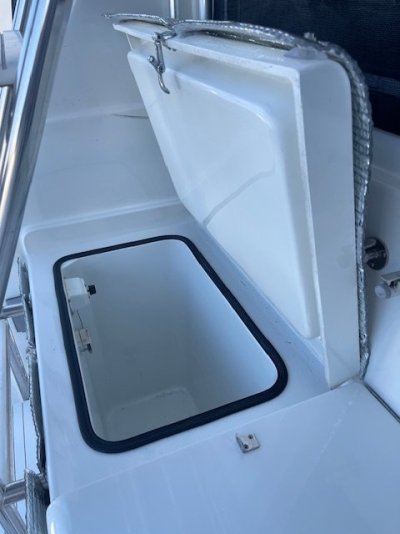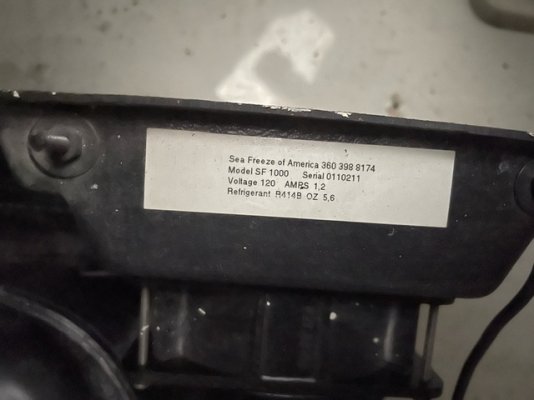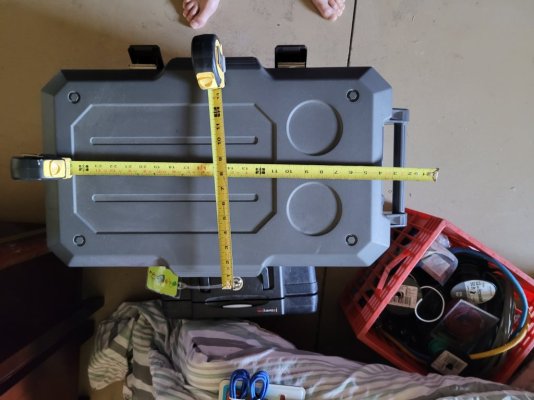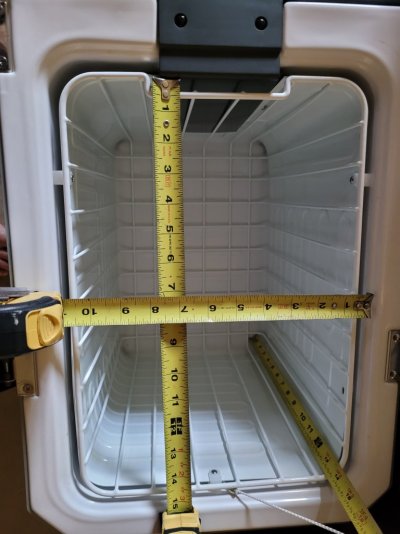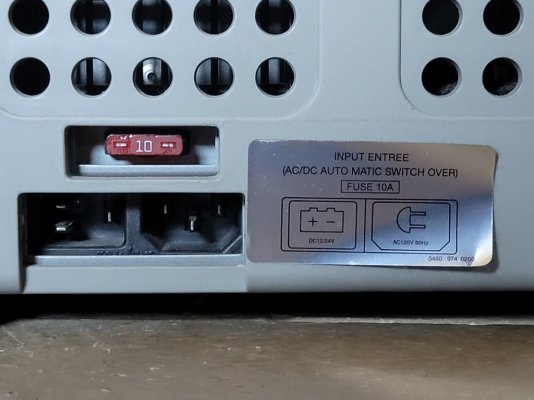lwarden
Guru
I have an issue with power usage by a built-in chest freezer I want to run buy you all.
My boat has built-in custom DC fridge in the galley with no freezer compartment. In the cockpit, in a somewhat awkward location I have a fairly substantial top-loading chest freezer which is AC powered rated at 1.2A. Both the fridge and freezer are custom from Sea Freeze in Bellingham WA. This freezer is overkill for the weekly trips we typically make but it does a good job of keeping things cold. The downside is, it's very power hungry. Since it's located outsider it gets blasted by the sun at times and the insulation on it is not very good. You can feel the cold on the outside and on humid mornings it condenses moisture on it so I know the heat leak is substantial. On an average day at 80 degrees I would estimate it's running 80-90% of the time. Current draw on the DC side after the inverter loss is 12 amps, so this is a huge drain on the batteries and I have to run the generator for a several hours each day to keep up.
Ideally I don't want to tear out the existing unit and add insultation since it's not in an area where you can easily access the sides. I have put on some reflective bubble wrap which is a little unsightly, but seems to help a bit with insulating.
Here are some options I'm considering but interested to hear from any of you who have ideas on the subject:
I want to improve this situation and hoping to cut running the generator time in half so looking for ideas of things I haven't considered.
My boat has built-in custom DC fridge in the galley with no freezer compartment. In the cockpit, in a somewhat awkward location I have a fairly substantial top-loading chest freezer which is AC powered rated at 1.2A. Both the fridge and freezer are custom from Sea Freeze in Bellingham WA. This freezer is overkill for the weekly trips we typically make but it does a good job of keeping things cold. The downside is, it's very power hungry. Since it's located outsider it gets blasted by the sun at times and the insulation on it is not very good. You can feel the cold on the outside and on humid mornings it condenses moisture on it so I know the heat leak is substantial. On an average day at 80 degrees I would estimate it's running 80-90% of the time. Current draw on the DC side after the inverter loss is 12 amps, so this is a huge drain on the batteries and I have to run the generator for a several hours each day to keep up.
Ideally I don't want to tear out the existing unit and add insultation since it's not in an area where you can easily access the sides. I have put on some reflective bubble wrap which is a little unsightly, but seems to help a bit with insulating.
Here are some options I'm considering but interested to hear from any of you who have ideas on the subject:
- Replace the AC compressor with a AC/DC Danfoss 50 model (if that has enough power to run the freezer). ND50CB4-QV (ND50OR-VFA-AC-GR) PreCharged Cooling Unit Danfoss Comp. This draws about 5.2 amps @12VDC at full power so would better than half my draw.
- Abandon the current cooling coils and add an off-the-shelf or slightly custom plate system like the ones from Nova Kool. This should be more efficient and since the coils would be inside the freezer the insulation should be improved.
- Install a smaller freezer elsewhere which is DC powered. There isn't an obvious place for one so this isn't a great option.
- Cut out the old freezer and build one with better insulation or find a compatible pre-built unit.
- Add a couple of solar panels and live with it.
- Suck it up and just keep running the generator.
I want to improve this situation and hoping to cut running the generator time in half so looking for ideas of things I haven't considered.

